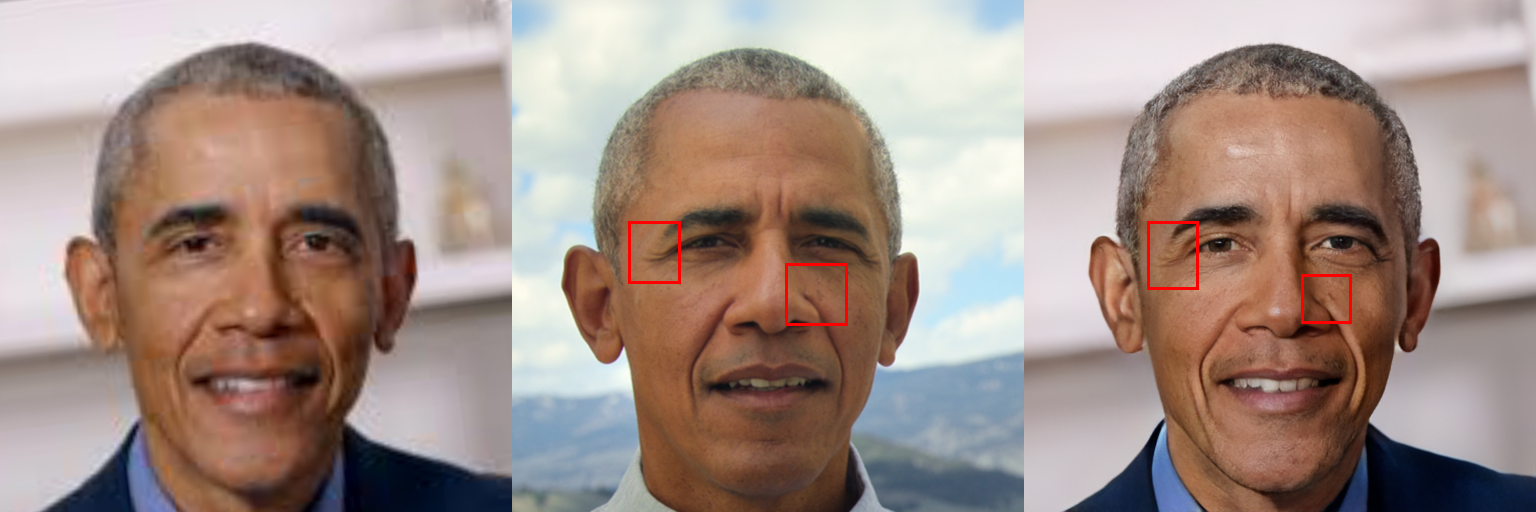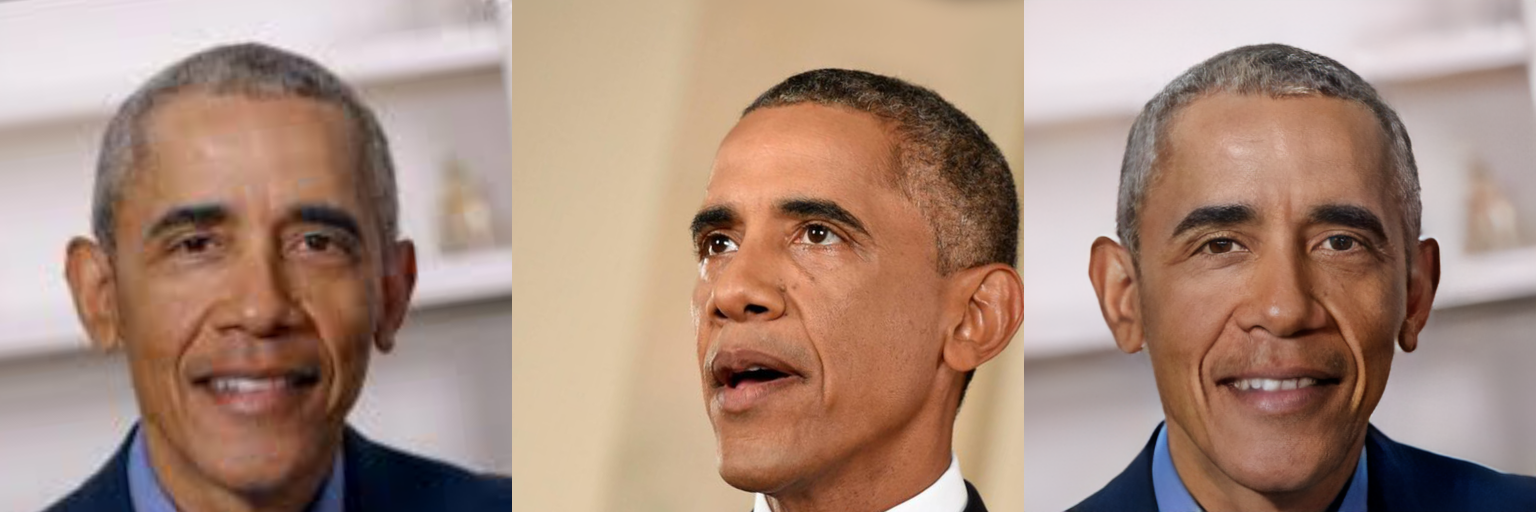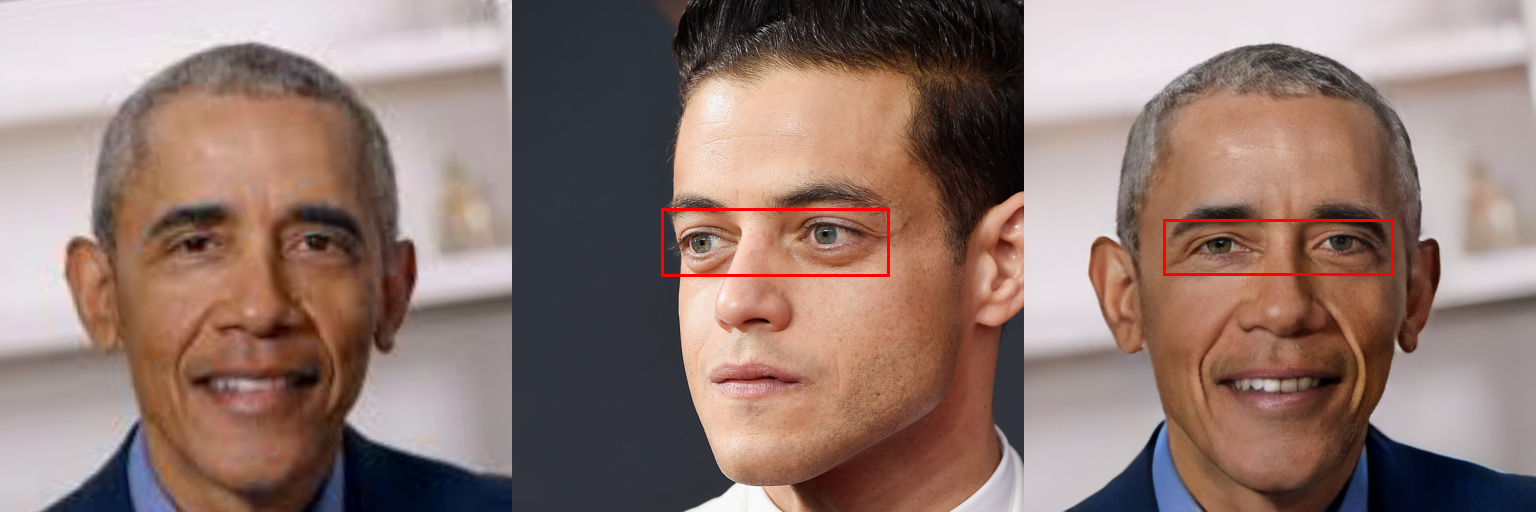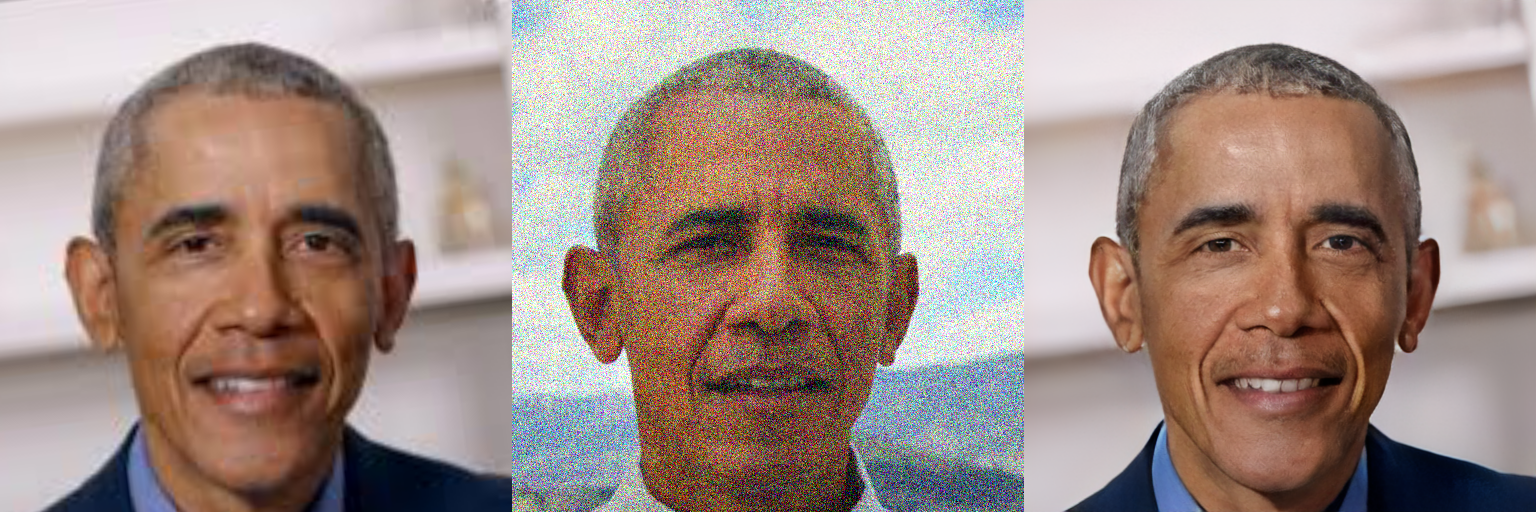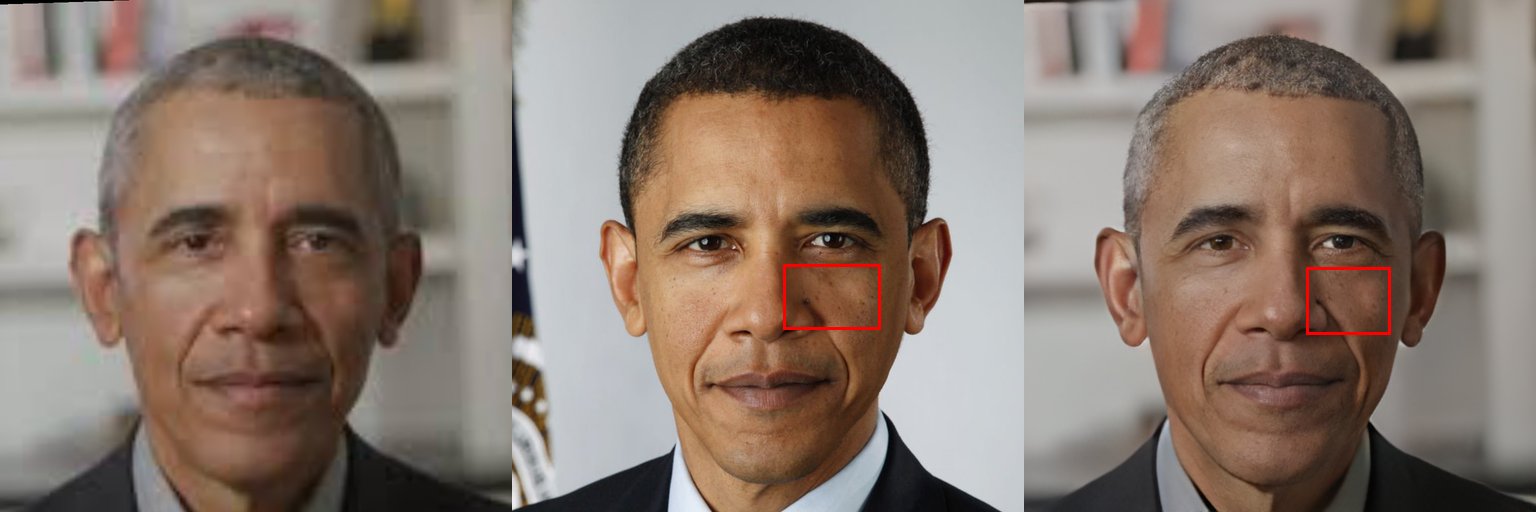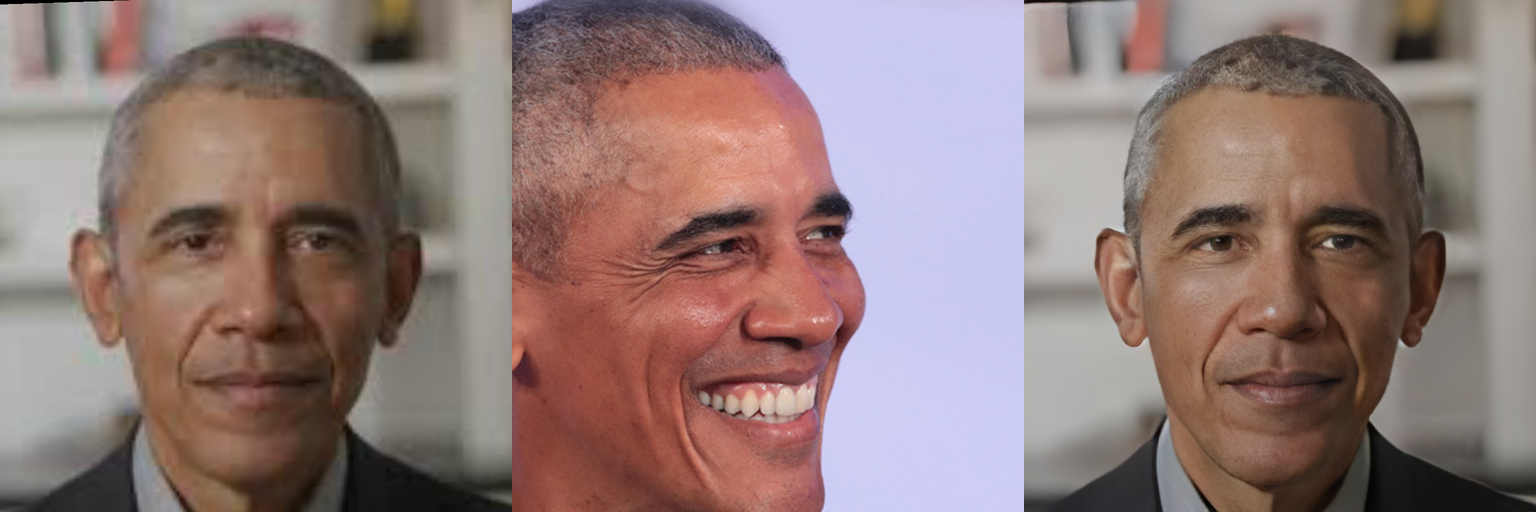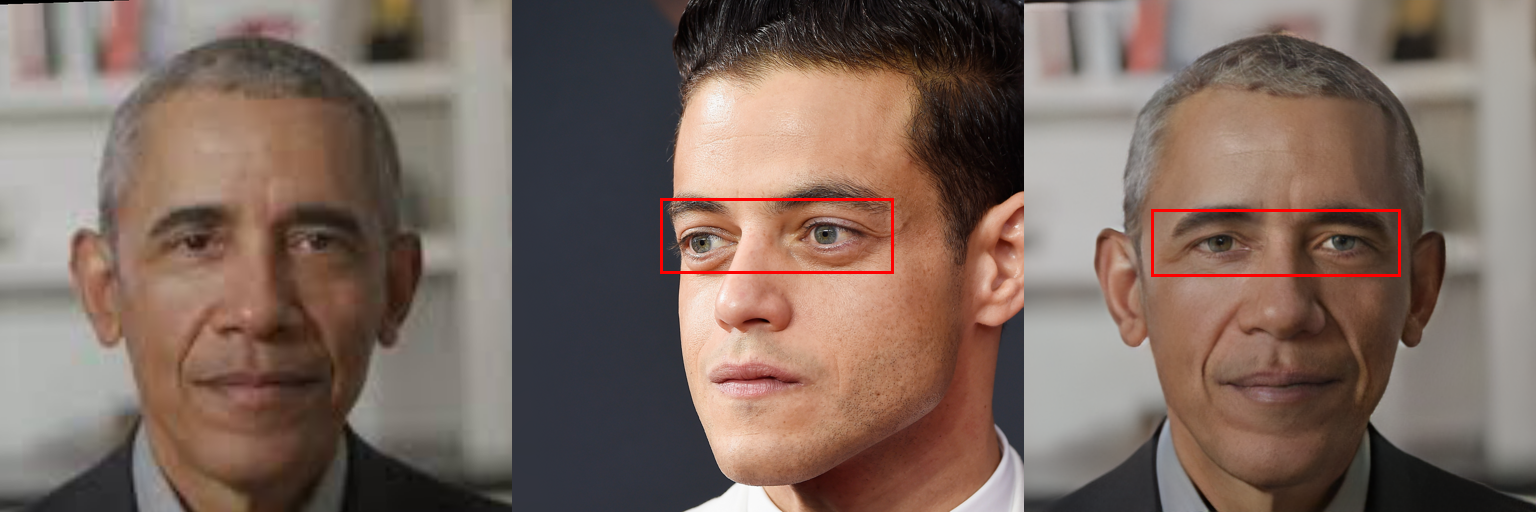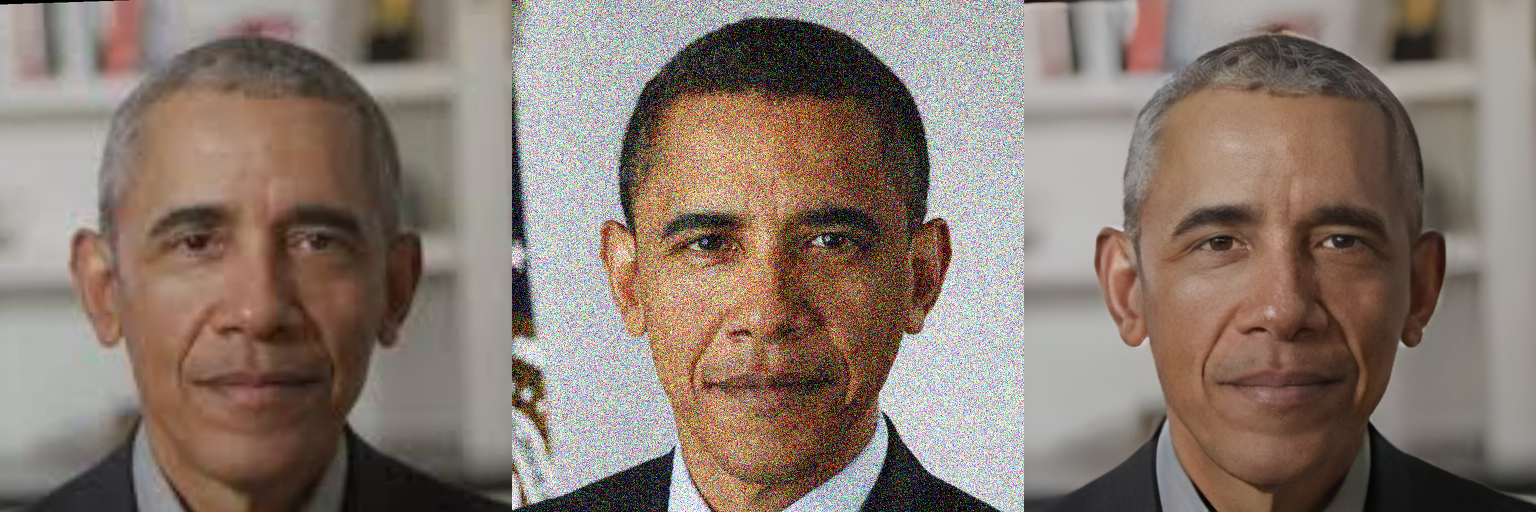Enhanced Blind Face Restoration with Multi-Exemplar Images and Adaptive Spatial Feature Fusion (CVPR 2020)
pip install -r requirements.txtDownload from the following url and put it into ./checkpoints/
CUDA_VISIBLE_DEVICES=0 python main_test.py -s ./TestExamples/TestLists.txt -d ./TestExamples/TestResultsYou may install the face_alignment by
pip install face-alignmentorconda install -c 1adrianb face_alignment
1) Select the high-quality references (see ./TestExamples/ObamaRaw) and then crop face region using the following command:
cd TestExamples
CUDA_VISIBLE_DEVICES=0 python AlignAsFFHQ.py -s ./ObamaRaw -d ./HQReferences/Obama2) Prepare the low-quality images (see ./TestExamples/LQRaw) and also crop face region using the following command:
cd TestExamples
CUDA_VISIBLE_DEVICES=0 python AlignAsFFHQ.py -s ./LQRaw -d ./LQCrop --no_paddingcd TestExamples
CUDA_VISIBLE_DEVICES=0 python FaceLandmarkDetection.py -s ./HQReferencesYou can also add
--checkto show the face images labeled with the detected landmarks.
'{}\t{}\t{}\n'.format([TEST_LQ_IMAGE_PATH],[ID_IMAGE_PATH],[ID_LANDMARKS_PATH])CUDA_VISIBLE_DEVICES=0 python main_test.py -s ./TestExamples/TestLists.txt -d ./TestExamples/TestResults-s and -d represent the source and save pathes, respectively.
From left to right: real-world low-quality input, high-quality reference, and restoration result
The first row for each group is restored with our selected optimal reference which is more consistent with the low-quality input (see poses and mouth open or closed). With our optimal reference, results are more photo-realistic and consistent with the identity (see the identity-belonging details in red boxes).
@InProceedings{Li_2020_CVPR,
author = {Li, Xiaoming and Li, Wenyu and Ren, Dongwei and Zhang, Hongzhi and Wang, Meng and Zuo, Wangmeng},
title = {Enhanced Blind Face Restoration with Multi-Exemplar Images and Adaptive Spatial Feature Fusion},
booktitle = {CVPR},
year = {2020}
}
(1) Single Reference based Specific Restoration (GFRNet)
@InProceedings{Li_2018_ECCV,
author = {Li, Xiaoming and Liu, Ming and Ye, Yuting and Zuo, Wangmeng and Lin, Liang and Yang, Ruigang},
title = {Learning Warped Guidance for Blind Face Restoration},
booktitle = {ECCV},
year = {2018}
}
(2) Multiple Exemplar based Specific Restoration (this work ASFFNet)
@InProceedings{Li_2020_CVPR,
author = {Li, Xiaoming and Li, Wenyu and Ren, Dongwei and Zhang, Hongzhi and Wang, Meng and Zuo, Wangmeng},
title = {Enhanced Blind Face Restoration with Multi-Exemplar Images and Adaptive Spatial Feature Fusion},
booktitle = {CVPR},
year = {2020}
}
(3) Component Dictionary based Generic Restoration (DFDNet)
@InProceedings{Li_2020_ECCV,
author = {Li, Xiaoming and Chen, Chaofeng and Zhou, Shangchen and Lin, Xianhui and Zuo, Wangmeng and Zhang, Lei},
title = {Blind Face Restoration via Deep Multi-scale Component Dictionaries},
booktitle = {ECCV},
year = {2020}
}
(4) Dual Memory based Generic and Specific Restoration (DMDNet)
@article{li2022learning,
title = {Learning Dual Memory Dictionaries for Blind Face Restoration},
author = {Li, Xiaoming and Zhang, Shiguang and Zhou, Shangchen and Zhang, Lei and Zuo, Wangmeng},
journal = {IEEE Transactions on Pattern Analysis and Machine Intelligence},
year = {2022}
}
(5) Learning Real-world Degradation from Face Images (ReDegNet)
@InProceedings{Li_2022_ReDegNet,
author = {Li, Xiaoming and Chen, Chaofeng and Lin, Xianhui and Zuo, Wangmeng and Zhang, Lei},
title = {From Face to Natural Image: Learning Real Degradation for Blind Image Super-Resolution},
booktitle = {ECCV},
year = {2022}
}
This work is licensed under a Creative Commons Attribution-NonCommercial-ShareAlike 4.0 International License.

